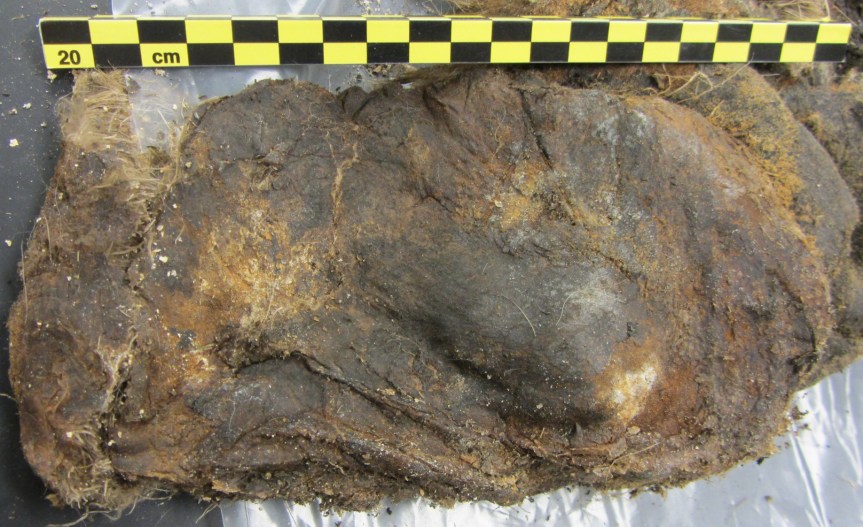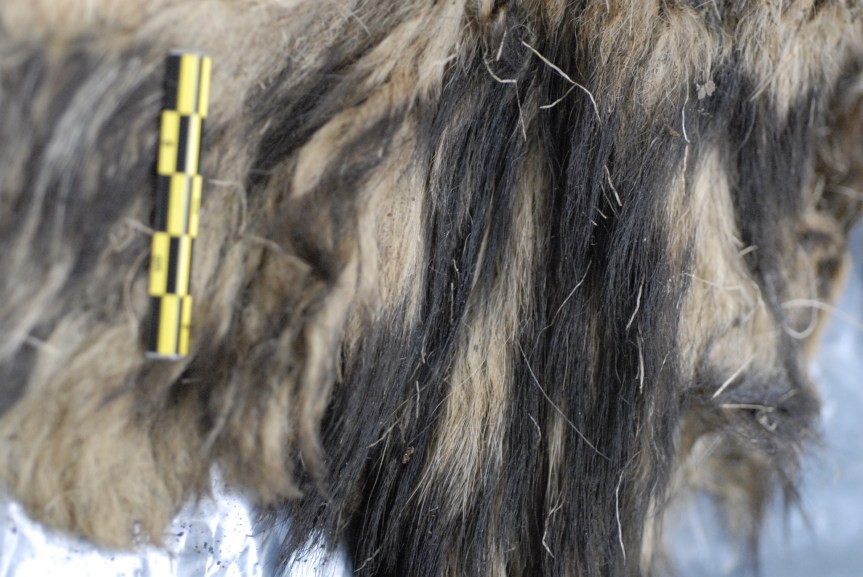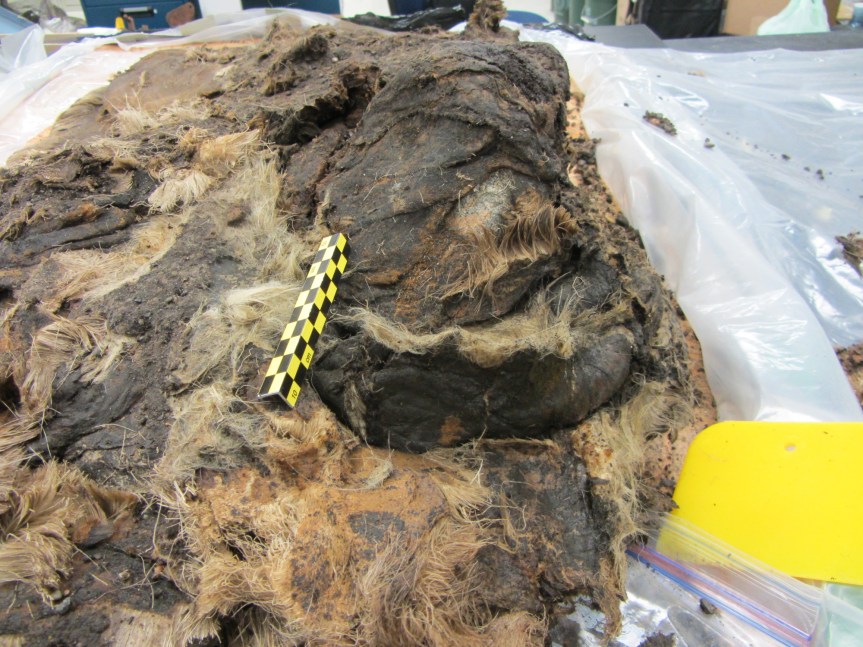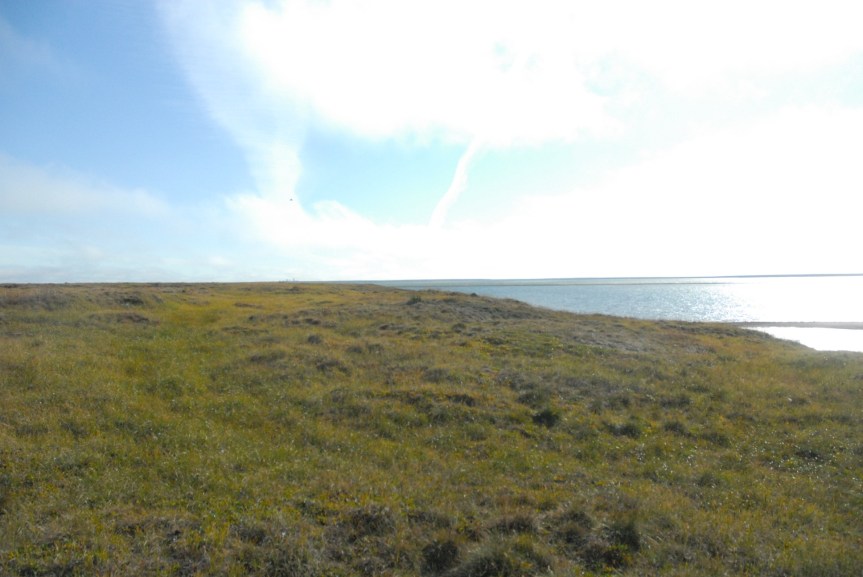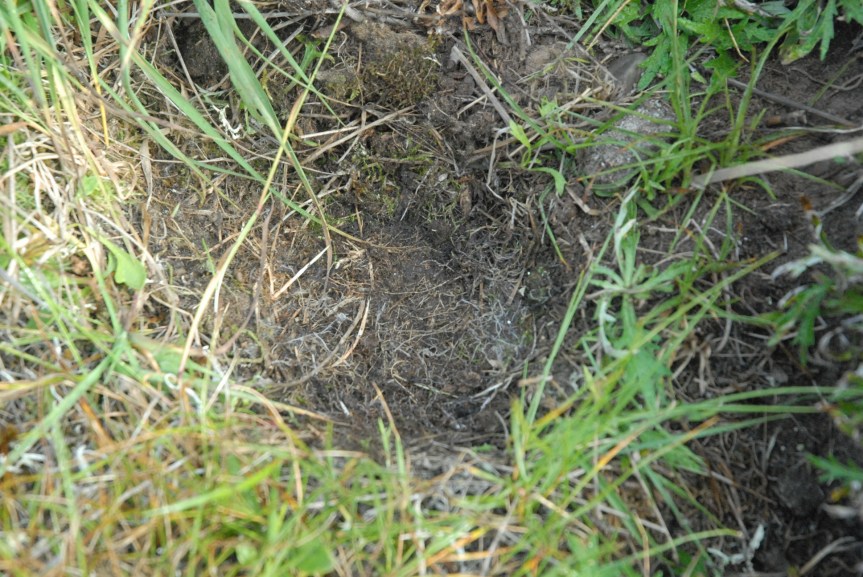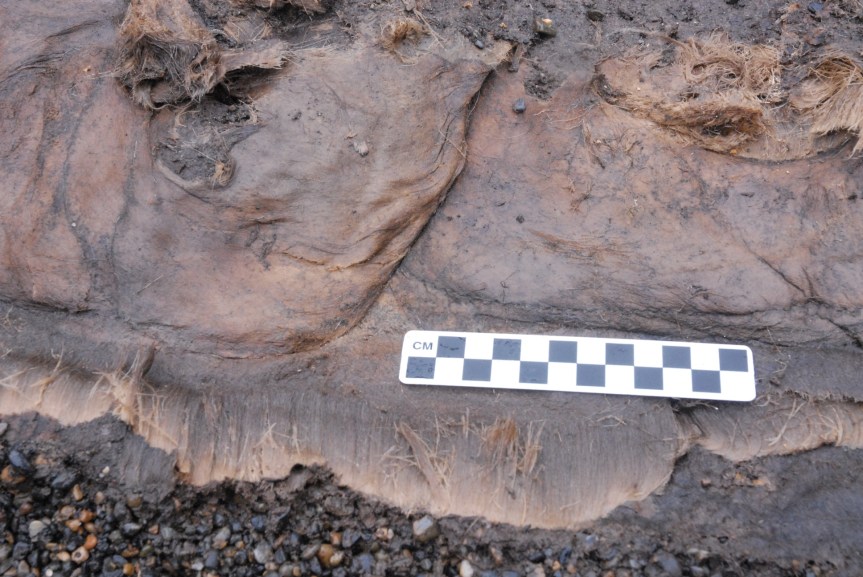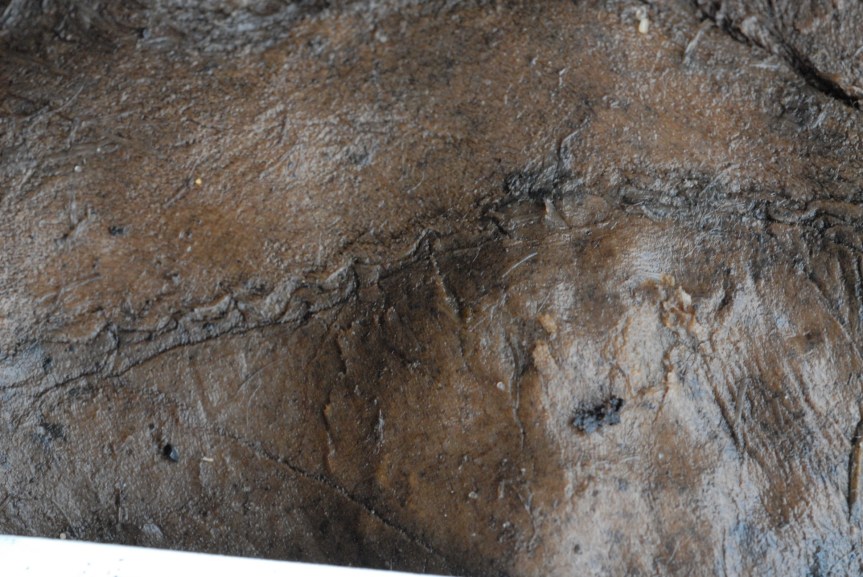I’ve more or less recovered from whatever I had, so I’ve actually got some energy to post. Herewith a quick update on the person in the parka and the skin clothes, etc that accompanied her (I’m no sure the person is a girl, but I need to pick a pronoun.
I was able to get the pantaloons off, although the legs fell apart. The boot part was apparently made from either leg skins or fawn skins. The waist seems to be have been made out of something similar, maybe as a waistband. The main part of the pants is regular caribou hide, which has much longer thicker hair. Since the waistband was wrapped around a belt made from a piece of hide, perhaps the regular caribou was too thick and inflexible to be suitable.

The back of the parka was about 10-15 cm longer (I can’t be more precise since the preservation was not perfect), and looked like it may have had a rounded hem. As far as I could see, there were no seams. According to Murdoch (which seems to be out of print again except in print-on-demand), children’s parka didn’t have back seams, but I am waiting on a couple of other books on skin clothing, and a few more experienced skin sewers opinions.
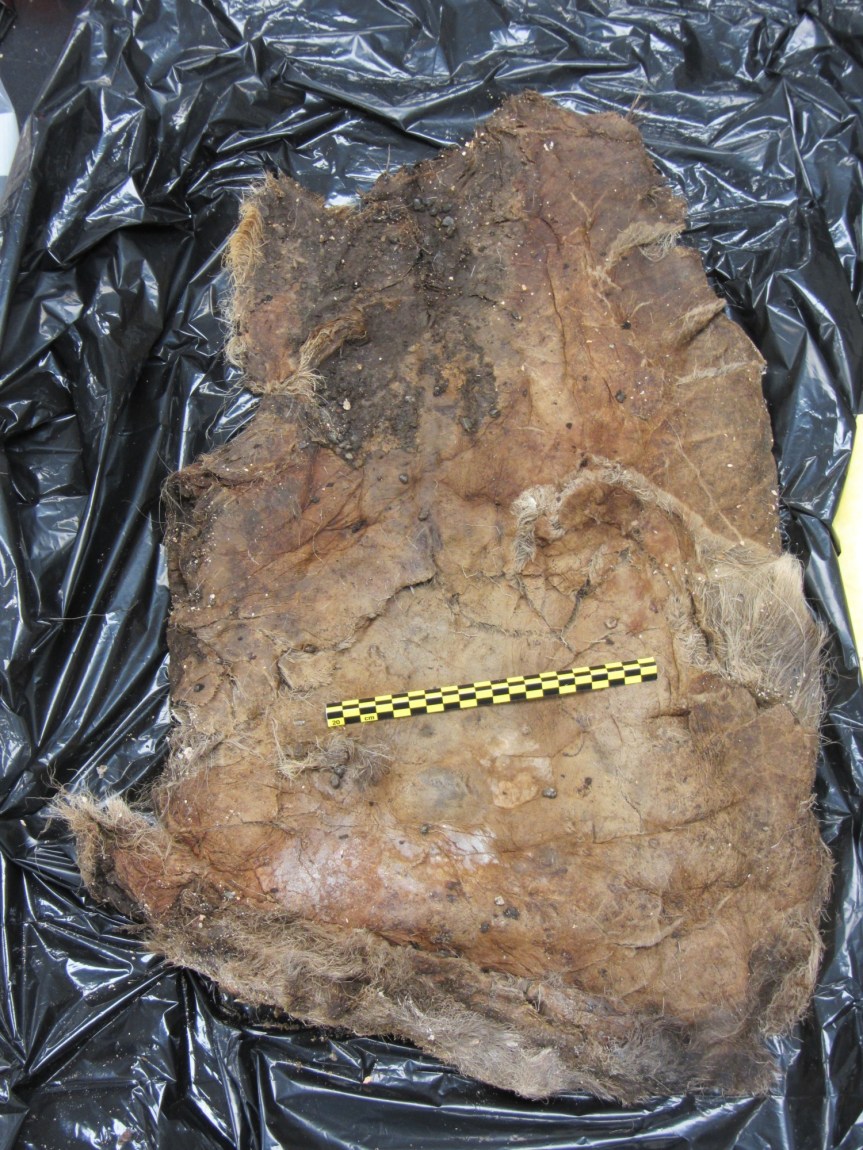
It took a bit of doing to get a look at the back, since it was fairly well stuck to the caribou hide underneath. I ended up getting Shawn to help me. We got a piece of Visqueen underneath the whole thing, very carefully, put plastic on top of it, and then put a piece of plywood on top to stabilize everything, held the plastic tight to the wood, and flipped everything. It worked well, and we were able to use the same method for the sewn wolf-skin item (still unidentified).
The wolf-skin has a lot of seams. Some bits are badly preserved or very badly matted, so it’s not clear what it used to be. However, a number of the smaller pieces that have been sewn together are still pretty much intact. I tried putting a picture of it onto my iPad, and opening it with Omnigraffle, so I could try drawing on the seam. I’m hoping that it will make it easier to understand, and that maybe someone will recognize what those pieces go to. I know this can work, since Bertha Leavitt was able to identify that the little girl from Ukkuqsi was buried with a kayak cover (among other things) based on the shape of a couple of pieces of sewn boat cover skins.
I’m still working on the drawings a bit to clean them up, and I’ll put them up on a separate page when they’re ready.
I also managed to finish a review today, and to get a bit done on a paper that I owe some folks. Both are actually for the same journal, different issues.
Folks were out whaling, and Panigeo crew took a whale, which is probably nearly done being butchered by now (judging by Jimmy Nukapigak’s Facebook updates :-)) . There was supposed to be one or maybe two more possibly struck, but I’m not sure yet. The weather is supposed to get worse, so I hope they get in soon.

